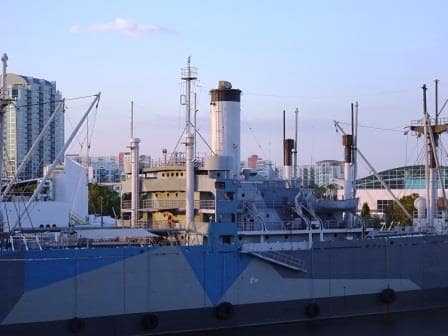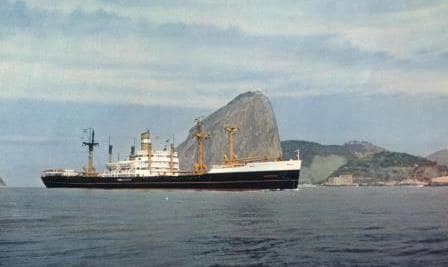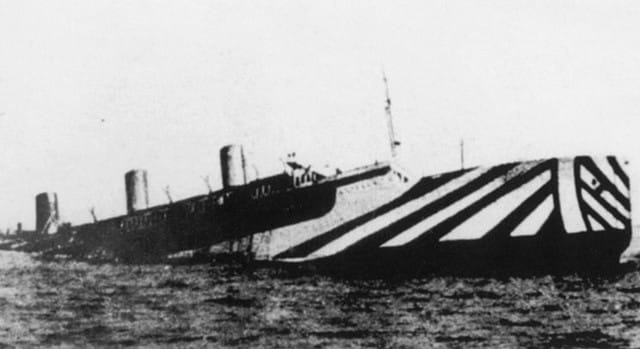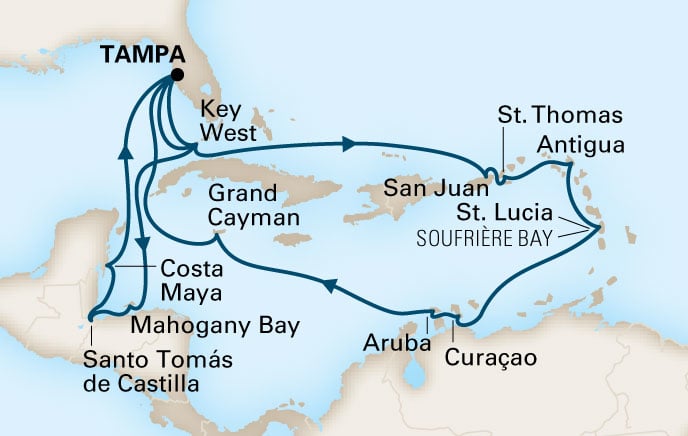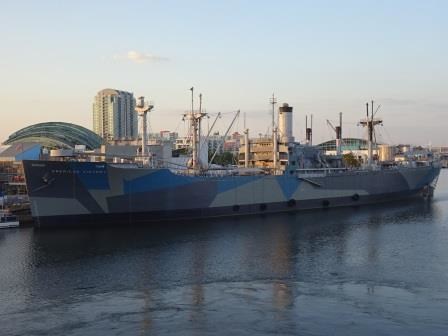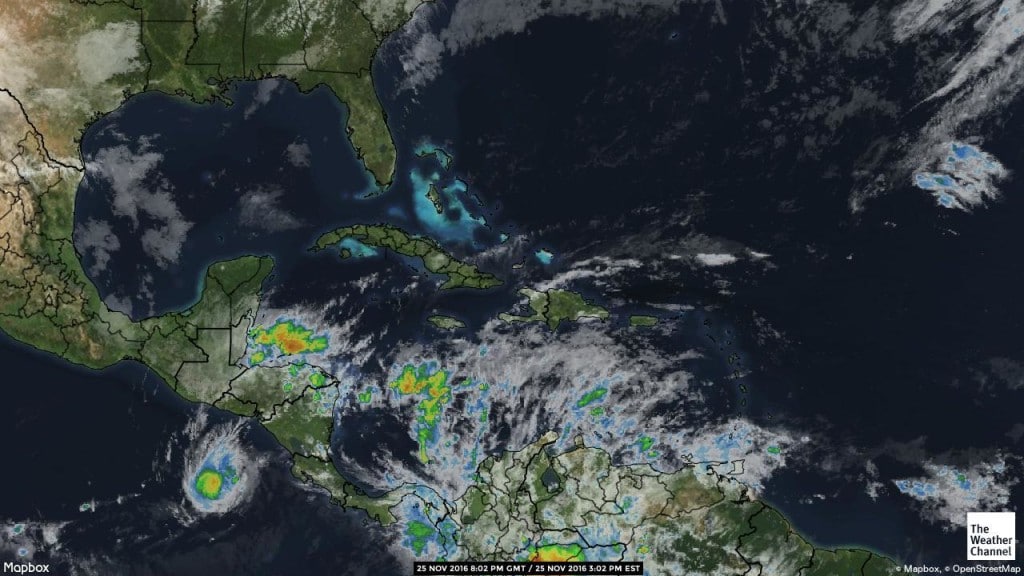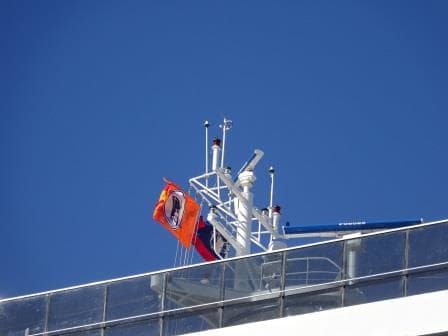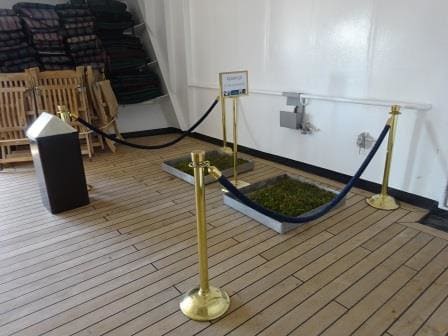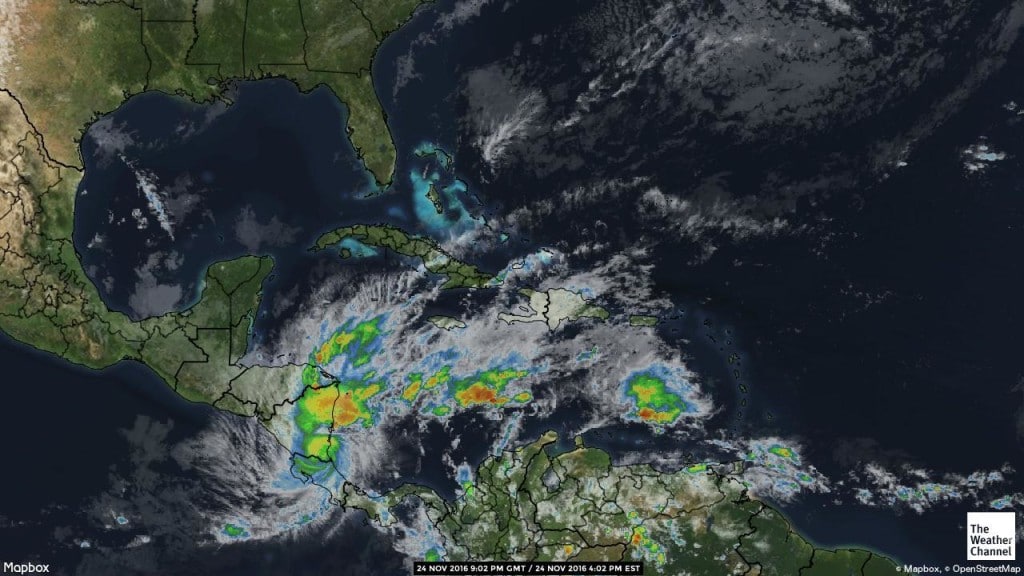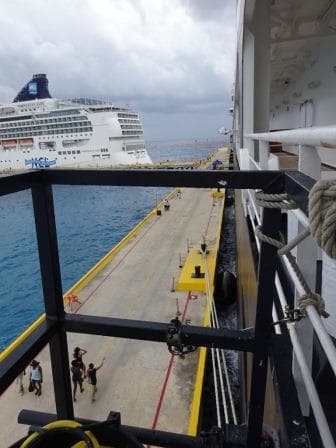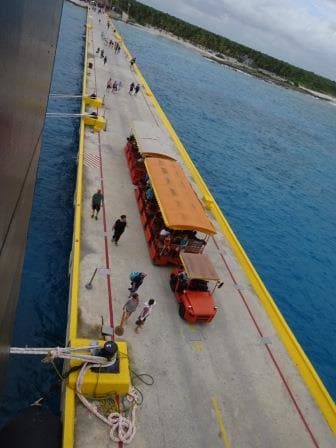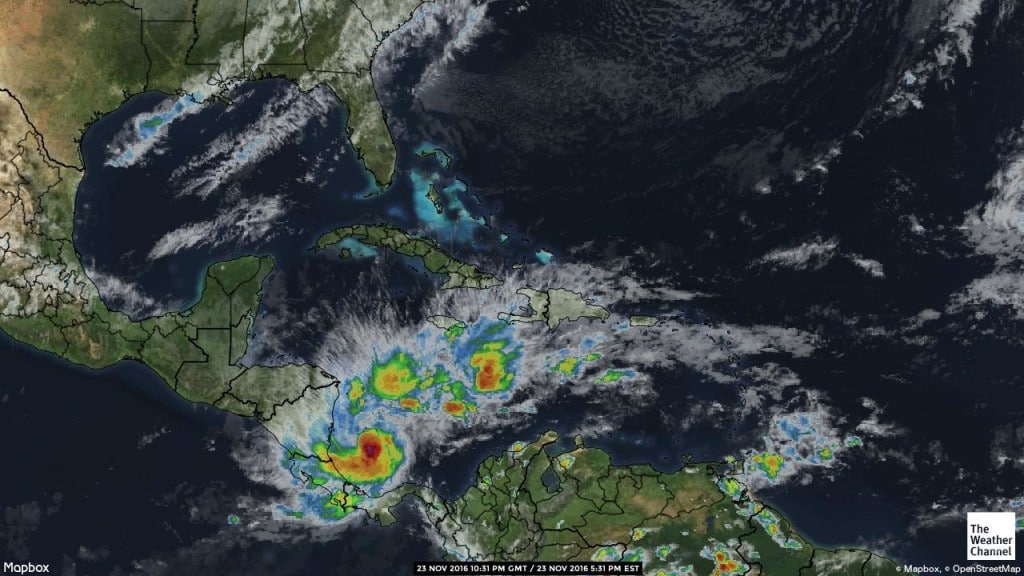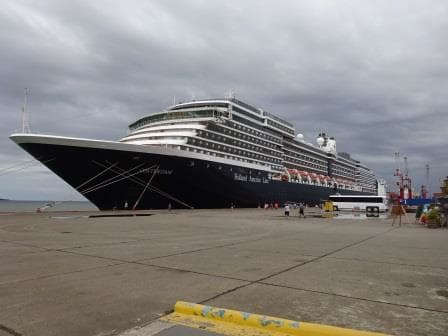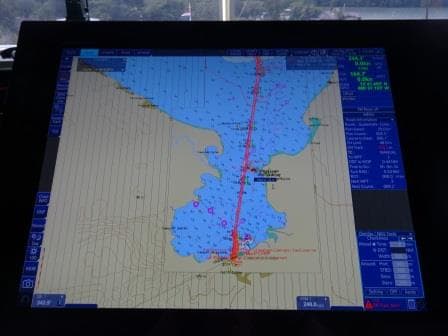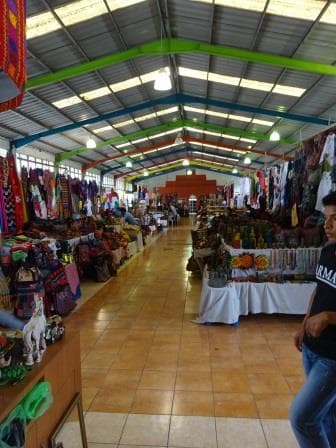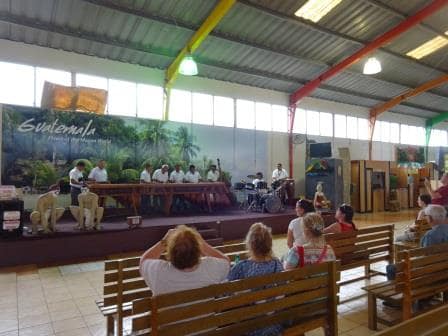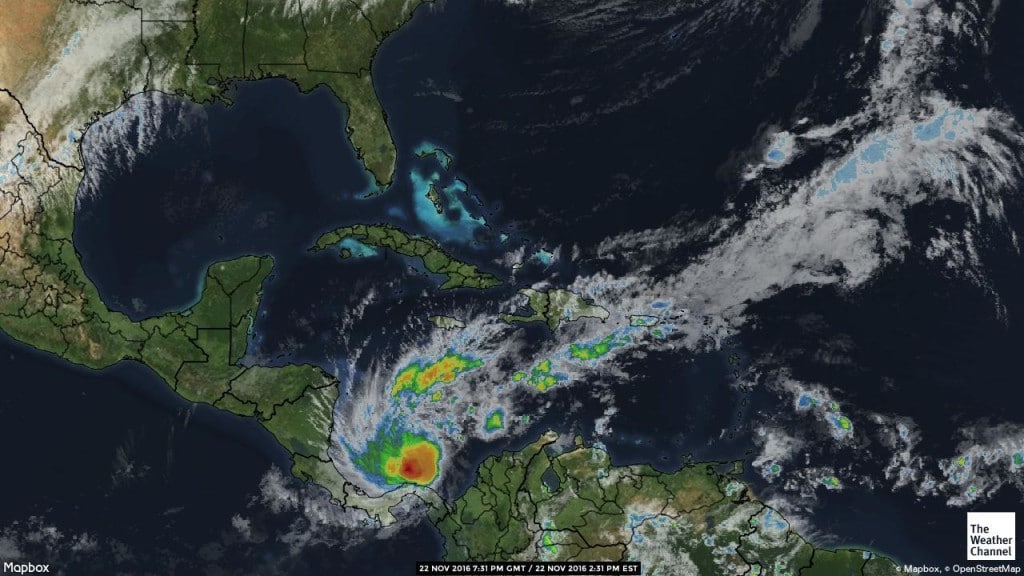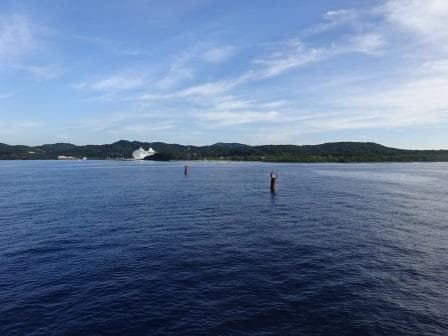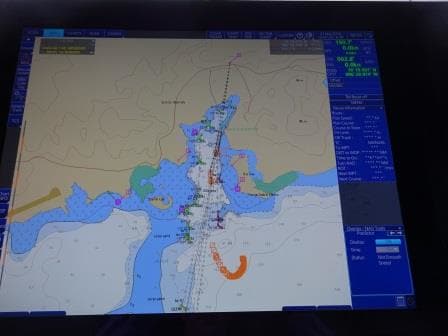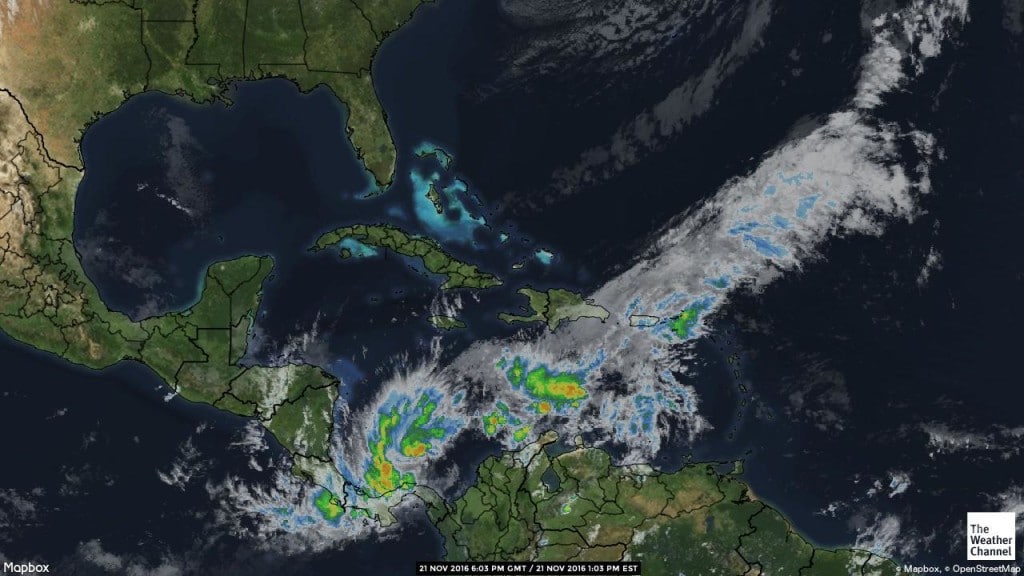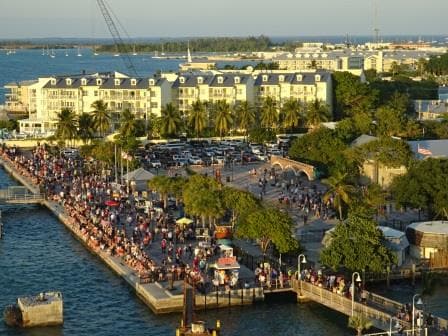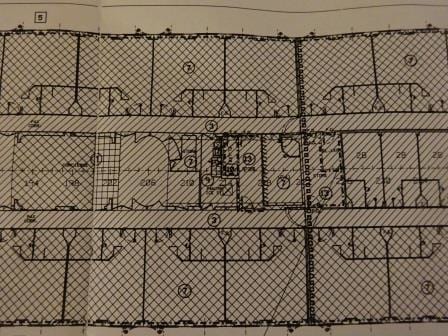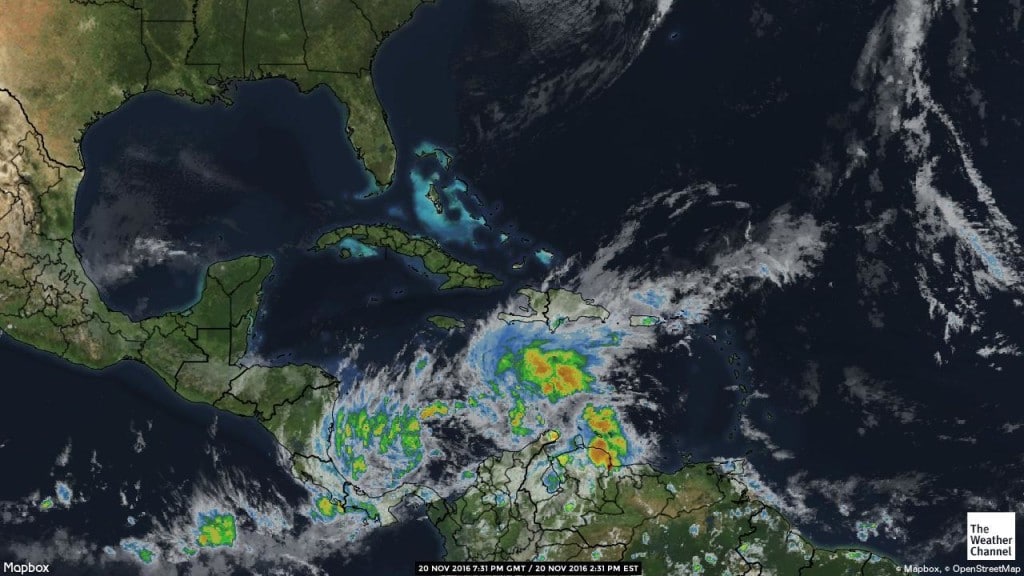As usual we had to wait for the sun to set before we could leave the dock in Key West. Because it was nice weather with only a gentle breeze in the afternoon, everything that floated was up and about and thus it took some doing to get the ship into the turning basin and back to open sea. The pilot boat had to summon & remind several pleasure craft about the Rules of the Road and that if that did not work, explain ………..if big goes against small, then big normally wins.
As soon as we left the pilot station we made a sharp turn to the East and then we followed the Gulf Stream into Nicholas Channel and then the Old Bahama Channel. When we went the other way, coming from Europe we did our best to avoid the Gulf Stream now it was a challenge to find the best balance between staying in it for as long as possible and at the same time not adding too much length to the courses. Otherwise you lose again what you gained with that free push of current. Unfortunately for the chief engineer and his fuel saving focus we will not catch much Gulf Stream before we enter Old Bahama Channel, where the current is against us.
We will be spending two days at sea and adjust for an arrival time at the pilot station of 09.45 in San Juan. From there it is roughly an hour to be completely alongside and if the local authorities are quick, then everybody will be able to go ashore at the scheduled arrival time of 11.00 hrs. There should not be an issue as Puerto Rico is considered to be a sort of USA as far as clearance activities by the CBP are concerned. And as we are coming from a USA port it should all be fair sailing. We should be in port with the Crystal Serenity and the Freedom of the Seas but we will only find out for sure when we are docked there as the cruise schedules are not always kept up-to-date.
The route we are following takes us above Cuba and Hispaniola in one straight line to San Juan. From Key West you can also go under Cuba but that is considerably longer as you first have to go west and south, then sail under and then come up again through the passage between Hispaniola and Puerto Rico. But it is a viable option when there is a hurricane going to the Bahamas and taking the Northerly route along the Eastern Caribbean Islands. Then we use the mountain range on Cuba as a natural buffer and just sail around the bad weather.
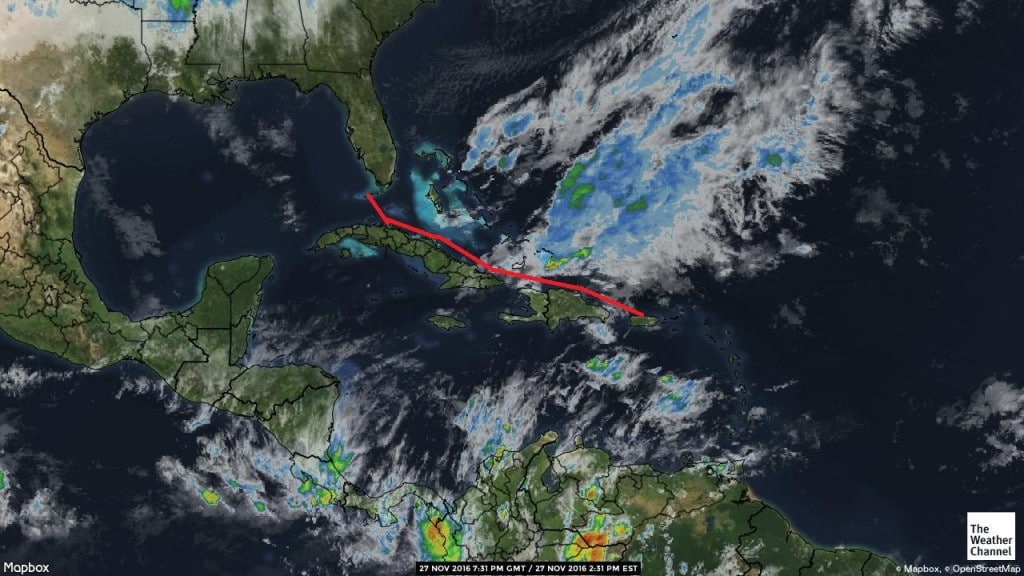
Our route and weather to San Juan. We are just sailing through the lower part of a weather front and it remains to be seen how much water is in there.
At the moment there is not much chance of a hurricane or storm as everything is really scattered in dry and wet areas. There is a lot of wet weather hanging over the Puerto Rican basin and we will have to see if some of that water will be “downloaded” onto the ship. It will all depend on the length of the cloud system and the angle of the wind higher up in the atmosphere. Same for the waves. Currently we are nicely sheltered with Cuba to the South and the Bahamas to the North but late tomorrow we will leave that shelter behind when we enter the open sea area south of Great Inagua Island. But as there is no frontal system around to whip up the waves we will only have to deal with the regular trade winds. And that means for the waves to reach a height of not more than 9 to 12 feet. Up to 10 feet the ship does not move at all and when the waves get higher then it depends on the length of the waves on how it will affect the ship. For the moment my estimate would be that we will have a very smooth sail to San Juan.
For on deck it will make for windy weather. We are going against the wind with about 17 knots. The wind is coming at us with about 20 knots and the combined wind velocity is thus reaching Gale Force winds if you stand exposed at the bow. On the Oosterdam the decks in front of the radar mast are completely shielded by tinted windows and thus you do not notice it. But it can be a tricky area as the sun beats down with Caribbean strength, and then reflects from the waves, and all around is the white superstructure from the ship which reflects the sun as well. Altogether good enough to create a sort of microwave oven of sun rays. Sun block 35 or 50 is of the essence.
Tomorrow is our 2nd day at sea and then we will be sailing in the open North Atlantic Ocean. Weather for tomorrow: a chance of rain and sun, windy and temperatures in the mid to high 70’s. (Mid 20oC’s)
